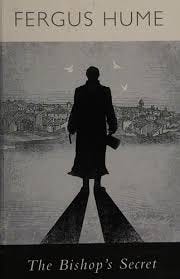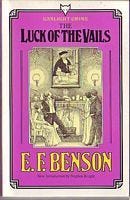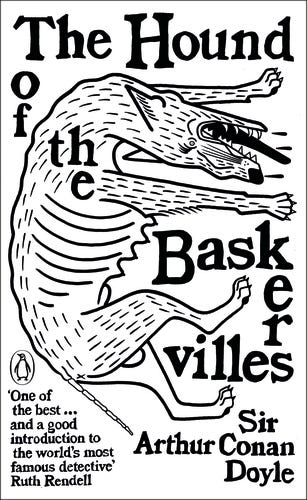At the start of this year, for no particular reason, I decided to start a new long-term reading goal. My aim is to read one crime novel from each year of the 20th century, in order. Normally, the bulk of my reading sits within the 1920-1940 range, so I hope this will be a fun way of exploring some new avenues and discovering some unexpected joys en route.
Here are my reflections on the first three books…
1900: The Bishop’s Secret (Fergus Hume)
Yes, I know the 20th century really began on 1 January 1901. But I decided to start in 1900, and now have to live with that decision.
For the first book, I picked up this lesser-known title from Australian author Fergus Hume, best remembered for his The Mystery of a Hansom Cab (1886). He became a prolific writer, publishing at least 5 other novels in the same year as The Bishop’s Secret.
The book is set in the fictional town of Beorminster, but you will have to decide your own pronunciation (Bemmster? Beer-minster? Chumley?). In the environs of Bemmster, Hume gives us an interesting set of ecclesiastical characters, including the titular bishop, who has a mysterious secret that threatens to bring shame on his family; Mrs Pansey, the classic church busybody and gossipmonger; and Cargrim, the ruthlessly ambitious bishop’s chaplain.
Most interesting of all, though, is the detective Ben Baltic, who describes himself as a “missionary”, with a somewhat unique mission strategy:
“This man exposed vices, so that those who committed them, being banned by the law, and made outcasts from civilisation, should find no friend but the Deity.”
In other words, Ben Baltic catches criminals, and then when the criminal thinks all hope is lost, he calls them to repentance, in hope of leading them to God. As a minister myself, I may have to explore this option for our Christmas outreach. In any case, it was interesting to follow a detective with such an explicitly religious motivation.
You’ll notice so far I’ve only discussed the characters and not the plot. That’s intentional, because the plot is distinctly average. But the characters made this an enjoyable start to my 100-book journey.
Verdict: ⭐⭐⭐ (3/5)
1901: The Luck of the Vails (E. F. Benson)
My next choice proved to be a disappointing selection from E. F. Benson, author of the Mapp and Lucia novels (as well as about 100 other books, including one on figure skating). He wrote two crime novels, of which The Luck of the Vails was the first, with The Blotting Book following in 1908. Of the latter, Martin Edwards wrote: “The solution, in a book with a small cast list, is far from surprising, but the quality of the writing keeps the reader wanting to turn the pages.”
Sadly, this page-turning quality wasn’t my experience of Benson’s first crime production. It does have a promising premise: It starts with the discovery of a jewel-encrusted goblet (“The Luck”) in an attic on Lord Vail’s 21st birthday. The goblet is accompanied by a quaint poem:
When the Luck of the Vails is lost
Fear not fire nor rain nor frost;
When the Luck is found again,
Fear both fire and frost and rain.
An ominous bit of poetry always raises my expectations, but these expectations were soon dashed against the rocks of nothing happening. The anticipated misfortune upon the cup’s discovery doesn’t materialise in the first 200 pages, and then I lost interest. I remain unafraid of either frost or rain.
Verdict: ⭐ (1/5)
1902: The Hound of the Baskervilles (Arthur Conan Doyle)
I don’t really need to introduce this book. It’s one of the most well-known detective novels of all time, regularly appearing on lists of “greatest crime books”. It’s also been the subject of numerous adaptations, including an April 1995 episode of the American dog-based children’s TV series Wishbone.
My personal connection with this book began in Year 8 or 9, when I read it at school, encouraged by my dad. At this point, though, I had precisely zero interest in detective fiction, and it didn’t make a particular impression on me. But I was looking forward to revisiting it as someone whose literary tastes have changed for the better.
If you haven’t read it, The Hound of the Baskervilles combines lots of great elements: a giant hound, a family curse, an escaped convict, a brilliant detective, and a very atmospheric setting on Dartmoor.
This setting provides another personal connection, as I grew up near Dartmoor, and have walked or driven past Dartmoor Prison (from which the convict escaped) many times. Doyle does an excellent job of depicting this setting, especially with Holmes remaining in London as Watson travels alone to Dartmoor at the start of the book, adding to the sense of isolation.
I was not so keen on the way the ending developed, but I can definitely see why this has endured as a classic. And it’s indisputably a very important contribution to the development of the genre.
Verdict: ⭐⭐⭐⭐ (4/5)
Let me know your thoughts if you’ve read any of these titles, or if you have better 1900-1902 titles to suggest! And join me next time as I discuss the next three books in my series…







